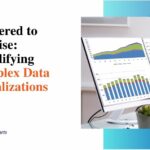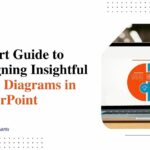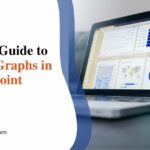Artificial Intelligence’s Role in Data Visualization: An Overview
The convergence of artificial intelligence in data visualization is transforming how we explore and present data. As AI capabilities grow more advanced and accessible, integrating them into data visualization and dashboard tools unlocks new possibilities for efficiently analyzing large, complex data sets. This convergence offers enhanced ways to query data, surface insights, customize reports, and more.
The Fundamentals of AI in Data Visualization and Dashboards
Several key AI technologies power modern data visualization and help create more intelligent dashboards. These include:
1. Natural Language Generation (NLG)
NLG algorithms structure raw data into written or spoken narratives to accompany charts and graphics. They transform statistics into observational summaries and derive meaning from trends. Rather than merely showing numbers in tables, NLG-enhanced visualizations use dynamically generated text to articulate patterns. This improves context and makes data exploration more intuitive.
2. Natural Language Querying (NLQ)
NLQ allows users to ask questions about data sets in plain language instead of writing code or querying databases. After interpreting the natural language questions, NLQ algorithms pull relevant data, analyze it, and visualize answers in dashboards. This saves significant time otherwise spent on database work. It also opens up data access to a broader audience without coding ability.
3. Predictive Analysis
Predictive analytics methods take historical and current data to forecast future outcomes using machine learning. The predictions generate new data variables for dashboard visualizations. This affords more informed business decision-making with insight into what is likely ahead based on modelling potential scenarios. AI makes prediction generation and updates to reflect new data highly automated.
4. Anomaly Detection
AI generation of data visualization can rapidly detect anomalies outside normal patterns by continuously analyzing real-time data flows. Alerting dashboard users to these atypical data occurrences helps identify problems early for investigation. Anomaly detection reduces relying solely on manual monitoring across huge data sets by programmatically flagging outliers.
Benefits of Integrating AI in Data Visualization

Augmenting AI in data visualization like NLG, NLQ, predictive models, and anomaly detection leads to several advantages:
a. Increased Efficiency and Productivity
Automating manual processes around preparing, querying, analyzing, and interpreting data speeds up dashboard development. People can focus their efforts on higher-value-adding tasks. A faster generation of insightful views reduces reporting backlogs. Teams access reliable information sooner for sharper and quicker data-driven decision-making.
b. Improved Accuracy and Insightfulness
Advanced analytics enhance contextual understanding and meaning from complex data. More accurate predictive models powered by machine learning reveal new patterns and variables. This promotes deeper, nuanced interpretations beyond surface-level trends. Both data experts and casual business users get an increased ability to make strategic decisions based on true drivers within data ecosystems.
c. Personalization and Customization
Generating natural language interpretations alongside visualizations makes dashboards digestible for varied audiences. User personalization allows customizing data views and metrics according to individual needs and contexts. This facilitates self-service access to company data instead of constantly relying on analysts and engineering teams. Democratized availability of interactive, meaningful dashboards has the power to positively reshape company cultures.
The Future of AI in Data Visualization
AI promises to expand capabilities around natural conversational interactions with data visualization tools. Using voice-based inputs to query dashboards or generate customized reports saves time over manual chart building. Voice interaction opens access for data insights beyond just those typing queries.
Advancements in augmented analytics will empower smarter auto-generated data perspectives. Algorithms behind the scenes will continually process updates to predictive models, outlier detections, and narrative text. This positions visualization tools to serve people with ongoing, personalized views, revealing only the most relevant, impactful analytics. Interpreting deluges of data becomes less overwhelming.
Increased analytics integration directly into real-time systems and processes via dashboards will accelerate data-driven decision automation. IoT sensor data, supply chain updates, financial transactions, and more will trigger instant AI evaluations and then actions. Rather than relying just on rear-view reporting, ubiquitous operational analytics keeps business momentum perpetually informed and calibrated.
Overall, enriched insights paired with broadening accessibility catalyzes a prolific flywheel effect. Enabling more people to make timely data-backed judgments perpetuates an enriching improvement cycle. Building futures based on amplified intelligence propels data visualization into an exciting frontier mixing human ingenuity with computational possibility.
Conclusion
Integrating AI takes data visualization and business intelligence to exciting new frontiers concerning how people access, consume, and interact with organizational data. Natural language interfaces open these insights to more diverse audiences. Automation around analysis, alerting, narration, and prediction drives more informed decisions through easily consumable and actionable dashboards.
With AI augmentation, dashboards transform from static reporting tools to collaborative hubs where cross-functional teams engage continuously with trusted, impactful data views. Rather than replacing human jobs, AI elevates people to focus on higher judgment tasks like interpretation, communication, and strategy evaluation. This creates abundant opportunities to enrich roles, enhance productivity, and promote positive data cultures.







